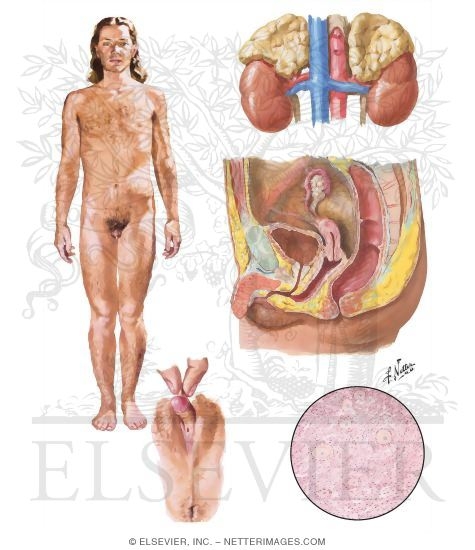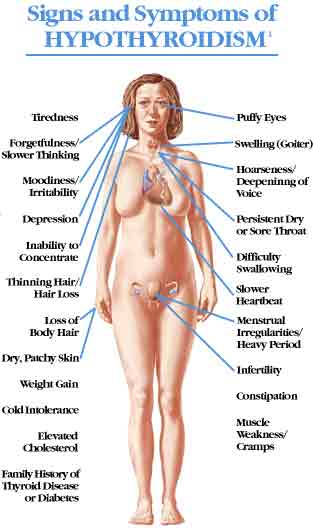Definition: Cushing syndrome refers to the clinical manifestations induced by chronic exposure to excess glucocorticoid.
Causes:
It most commonly arises from iatrogenic causes, when glucocorticoids are given to treat inflammatory diseases.
In contrast, spontaneous Cushing’s syndrome is rare.
It results from various causes that all have in common a chronic over-secretion of cortisol by the adrenals (Table 1).1–3
Cushing’s disease is the most common cause of spontaneous Cushing’s syndrome, occurring in
60–70% of Cushing’s patients. It results from the hypersecretion of adrenocorticotropic hormone
(ACTH) by a pituitary corticotroph adenoma.
Ectopic ACTH syndrome is responsible for 5–10% of the cases of spontaneous Cushing’s syndrome; it is caused by a variety of ACTH-secreting non-pituitary tumours.
About 20–30% of spontaneous Cushing’s syndromes are independent of ACTH and are caused by
primary adrenocortical tumours.
Spontaneous Cushing’s syndrome is rare; the estimated incidence is about 0.7–2.4 per million per
year.4–6 There is a high female-to-male ratio (about 3–5:1), except in ectopic ACTH syndrome.
Table 1
Causes of spontaneous Cushing’s syndrome.
ACTH-dependent
- Pituitary ACTH over-secretion
- Cushing’s disease 60–70%
- CRH-secreting tumours (rare)
- Non-pituitary ACTH over-secretion
- Ectopic ACTH syndrome 5–10%
ACTH-independent
- Unilateral adrenocortical tumour
- Adrenocortical adenoma 10–15%
- Adrenocortical carcinoma 10–15%
- Bilateral adrenocortical involvement
- Primary pigmented nodular
- Adrenocortical dysplasia (rare)
- ACTH-independent bilateral macronodular adrenocortical hyperplasia (rare)
Aetiopathology:
Pituitary cause:
Most are microadenomas, arbitrarily defined as being less than 10 mm with a mean of approximately 6 mm. The classic basophilic adenoma is made of a more-or-less homogenous collection of corticotroph cells that are ultimately specifically recognised by immunohistochemistry with antibodies directed against ACTH molecule or other proopiomelanocortin derived epitope. In Cushing’s disease, pituitary ACTH over-secretion induces bilateral adrenocortical hyperplasia and an excess production of cortisol, adrenal androgens and 11-deoxycorticosterone.
The hallmark of ACTH over-secretion in Cushing’s disease is its partial resistance to the normal suppressive effect of glucocorticoids. Because ACTH secretion by the pituitary tumour is not normally restrained, ACTH is over-produced and results in subsequent chronic hypercortisolism. Since peripheral tissues have retained their normal sensitivity to the action of cortisol, they appropriately develop the features of Cushing’s disease.
In contrast with some other endocrine functions in human, chronic adrenocortical stimulation by
ACTH does not induce a desensitisation state. Indeed, the opposite occurs: the adrenocortical response is amplified, and it is not unusual to observe a very high secretion of cortisol in face of ‘normal’ (but constant and inappropriate) ACTH plasma levels.
In response to ACTH, various growth factors are locally produced: insulin-like growth factor 1
(IGF1), basic fibroblast growth factor (bFGF) and IGF2 participate in stimulating corticosteroid
production, the growth of the adrenals and the adrenal vascular system as well.
The mechanisms of adrenal androgen secretion are grossly parallel with that of cortisol. Thus,
dehydroepiandrosterone (DHEA), DHEA sulphate and androstenedione are elevated in ACTH-dependent Cushing’s disease. Their peripheral transformation to testosterone and dihydrotestosterone may lead to a state of androgen excess in females.
ACTH and the lipotropins (b- and g- LPHs), both derive from the enzymatic processing of their
common polypeptide precursor, POMC, and are secreted in equivalent molar quantities by the corticotroph cells. The three peptides share a common melanocyte-stimulating activity through the melanocortin receptor type 2 (MC-R2), and they may cause skin hyper-pigmentation when the
corticotroph adenoma is hyperactive: this occurs mainly in the Nelson’s syndrome.
*Nelson syndrome: rapid enlargement of a pituitary adenoma that occurs after the removal of both adrenal glands.
ACTH over-secretion most commonly induces adrenocortical bilateral simple diffuse hyperplasia.
The two glands are symmetrically (and generally moderately) enlarged.
Clinical findings
Fat distribution
Centripetal fat deposition is the most common manifestation of glucocorticoid excess and is often
the initial symptom of the patient. Although weight gain is classic, it may be minimal. The peculiar
distribution of adipose tissue readily distinguishes it from simple obesity: fat accumulates in the face
and the supraclavicular and dorsocervical fat pads, resulting in a typical moon face and buffalo hump, which is most often accompanied by facial plethora. Fat also accumulates over the thorax and the abdomen, which becomes protruding (Fig. 1). This acquired habitus change is best evidenced by comparison with anterior photographs.2,3,7
*despite the fat that cortisol can cause a moderate degree of fatty acid mobilization from adipose tissue, many people with excess cortisol secretion develop a peculiar type of obesity, with excess deposition of fat in the chest and head regions of the body, giving a buffalo-like torso and a rounded 'moon face'. Although the cause is unknown, it has been suggested that this obesity results from excess stimulation of food intake, with fat being generated in some tissues of the body more rapidly than it is mobilized and oxidized.
Protein-wasting features
Not as frequent, but certainly crucial, are the clinical features that pertain to the protein-wasting
effect of chronic cortisol excess. Absent in simple obesity, they have a high diagnostic value and must
be thoroughly investigated at examination.2,3,7
Fig. 1. (A & B) Typical aspect of a patient with Cushing’s syndrome: centripetal fat depositing with truncal obesity contrasting with the muscular atrophy of the thighs and legs (Personal collection).
Skin thinning due to the atrophy of the epidermis and the underlying connective tissue may be mild and is best appreciated by running the skin gently over the tibial crest; in some patients, the skin is so fragile that it can be scratched simply by removing a strip of adhesive tape. Skin thinning and tension over accumulated fat both account for the plethoric appearance of the face and the purple aspect of striae due to the streaks of capillaries that almost become visible. Striae are present in many patients and are most commonly located on the abdomen and the flanks, and also on the breasts, hips and axillae. In contrast with the usually whitish and small striae often seen after pregnancy or rapid weight gain, the striae of Cushing’s disease are large and purple.
Minimal trauma generates multiple ecchymotic lesions or purpura, especially on the forearm, and venous puncture often results in large ecchymotic lesions.
Minor wounds heal slowly and are the source of postoperative complications at the incision site. The most superficial wounds, particularly frequent on the lower extremities, may lead to
indolent infection and ulceration that take months to disappear. Lower limb oedema is frequent and does not always result from congestive heart failure but rather from increased capillary permeability. Protein wasting is responsible for generalised tissue fragility. Surgeons usually find that the tissues tear easily. Spontaneous ruptures occur, mainly of tendons.
Muscle wasting is frequent and characteristically proximal, leading to fatigability and muscle
atrophy, particularly in the lower limbs. The weakness may be so severe as to prevent the patient from getting up from a chair without help.
Bone wasting (cortisol inhibit osteoblast activity) results in general osteoporosis. The prevalence of bone demineralisation assessed by bone mineral density using dual energy X-ray absorptiometry is about 40%8; particularly vulnerable is the vertebral body. Compression fractures of the spine are evident on plain radiographs in about 20% or 80% of the patients depending on the studies, and almost half of the patients complain of backache. Kyphosis and loss of height, sometimes dramatic, are frequent. Pathological fractures can occur elsewhere, particularly in the ribs and pelvis.8,9
There is an impaired defence mechanism against infections. Banal bronchopulmonary infections
may take a most aggressive, life-threatening course. Superficial mucocutaneous infections are
extremely frequent, such as tinea versicolor and ungual mycosis, which will only subside with the
control of hypercortisolism.
Minimal trauma generates multiple ecchymotic lesions or purpura, especially on the forearm, and venous puncture often results in large ecchymotic lesions.
Minor wounds heal slowly and are the source of postoperative complications at the incision site. The most superficial wounds, particularly frequent on the lower extremities, may lead to
indolent infection and ulceration that take months to disappear. Lower limb oedema is frequent and does not always result from congestive heart failure but rather from increased capillary permeability. Protein wasting is responsible for generalised tissue fragility. Surgeons usually find that the tissues tear easily. Spontaneous ruptures occur, mainly of tendons.
Muscle wasting is frequent and characteristically proximal, leading to fatigability and muscle
atrophy, particularly in the lower limbs. The weakness may be so severe as to prevent the patient from getting up from a chair without help.
Bone wasting (cortisol inhibit osteoblast activity) results in general osteoporosis. The prevalence of bone demineralisation assessed by bone mineral density using dual energy X-ray absorptiometry is about 40%8; particularly vulnerable is the vertebral body. Compression fractures of the spine are evident on plain radiographs in about 20% or 80% of the patients depending on the studies, and almost half of the patients complain of backache. Kyphosis and loss of height, sometimes dramatic, are frequent. Pathological fractures can occur elsewhere, particularly in the ribs and pelvis.8,9
There is an impaired defence mechanism against infections. Banal bronchopulmonary infections
may take a most aggressive, life-threatening course. Superficial mucocutaneous infections are
extremely frequent, such as tinea versicolor and ungual mycosis, which will only subside with the
control of hypercortisolism.
*Cortisol prevents proliferation of T-cells by rendering the interleukin-2 producer T-cells unresponsive to interleukin-1 (IL-1), and unable to produce the T-cell growth factor. Cortisol also has a negative-feedback effect on interleukin-1.
Most patients have high blood pressure. It may occasionally be severe, inducing cardiac hypertrophy and eventually congestive heart failure. Increased susceptibility to both arterial and venous thrombosis is also present due to lipid and coagulation disturbances. Cardiovascular complications are the major threats of the disease and contribute greatly to its morbidity and mortality rate.
Hirsutism, due to a slight excess of adrenocortical androgens, is extremely frequent in women.
Excess adrenal androgens and cortisol both suppress the gonadotroph function, which results in an array of gonadal dysfunctions: most female patients have oligomenorrhoea and amenorrhoea, and infertility is frequent. In male patients, the curtailed gonadotroph function induces a dramatic fall in testosterone, which is not compensated by the increased adrenocortical androgens. It results in a loss of libido and diminished sexual performance. Loss of sexual hair and reduced testis size are observed
Psychic disturbances are extremely common. They are highly variable both in their expression and
their severity, and they do not correlate with the intensity of the hypercortisolism. They are most
often mild and limited to anxiety, increased emotional lability and irritability or unwarranted
euphoria. Sleep disorders are also frequent. Severe psychotic symptoms may occur, such as depression, maniac disorders, delusions and/or hallucinations, and may ultimately lead to suicide. Decreased short-term memory and cognition are common and are associated with transient features of brain atrophy that disappears after cure. Impaired quality of life may persist years after control of the hypercortisolism.
In children, Cushing’s disease almost invariably provokes growth retardation if not growth arrest. A decrease in growth rate may be the sole symptom in mild forms of the disease, where the final
diagnosis is often delayed. Weight gain with centripetal obesity, as in adults, is present in most cases,
however.
*glucocorticoid-induced resistance of target-tissues to insulin-like growth factor 1 (IGF-1) and other growth factors.
Diagnostic procedures
Routine laboratory
Altered counts of circulating leucocytes are frequent, showing increased neutrophils and decreased
lymphocytes and eosinophils.
Serum electrolytes are usually normal. In severe cases, hypokalaemia, alkolosis and hypernatraemia develop in response to high levels of cortisol and deoxycorticosterone. Renal stones are present in approximately 50% of all patients. Although some degree of glucose intolerance is observed in most patients, frank fasting hyperglycaemia occurs in a minority of patients. Hyper-homocysteinaemia and reduced serum folate levels may be observed. The adverse metabolic profile is often associated with hepatic steatosis (20% of patients)30 and increased visceral fat.
Chest X-ray and electrocardiogram results are normal, except in cases of rib fractures, and cardiac
enlargement due to high blood pressure. Serum IgG have been reported to be slightly depressed. Bone
mass is reduced in many patients, as well as biochemical markers of bone formation such as osteocalcin.
Establishing the hypercortisolic state
The diagnosis of hypercortisolism should be performed under controlled conditions, avoiding stressful or pathological situations that might create unspecific activation of the pituitary–adrenal axis.
Baseline measurements
Three baseline measurements have essentially equivalent diagnostic performances, and can be used
alternatively, depending on the local availability.3,35
Late-night serum cortisol. As a group, patients with Cushing’s syndrome have high early-morning serum cortisol values, yet around 50% of patients fall within the normal range.
Because patients with Cushing’s syndrome typically lack a normal circadian rhythm, this overlap
progressively disappears during the day. Late-evening serum cortisol has a high sensitivity and
specificity. A single sleeping midnight serum cortisol of <50 nmol l 1 (1.8 mg dl 1) effectively excludes
Cushing’s syndrome; an awake midnight serum cortisol of >207 nmol l 1 (7.5 mg dl 1) is highly
suggestive of Cushing’s syndrome.
Late-night salivary cortisol. Salivary cortisol is a perfect indicator of plasma-free cortisol. It offers
a convenient and non-stressful way of sample collection, even in outpatients. It can substitute for
plasma cortisol with at least an equal performance, approximately 95% specificity and sensitivity.
24-h urinary cortisol excretion (urinary cortisol). An almost perfect distinction is obtained between
patients with Cushing’s syndrome and normal subjects, provided that the urine collection is done
accurately and that the laboratory has validated its normal values in a large population of normal
subjects (usually less than 250 nmol per 24 h (or 90 mg per 24 h)).
Suppression tests
The classic 2-day low-dose dexamethasone suppression test. In a normal individual, the administration of
0.5 mg dexamethasone, given every 6 h for eight doses (2 mg per day for 2 days), induces almost
complete suppression of ACTH and of cortisol secretions. Urinary cortisol excretion on the second day
(normal response: less than 27 nmol per 24 h (or 10 mg by 24 h)), or morning serum cortisol at the end
of the test (normal response: less than 50 nmol l 1 (or 1.8 mg dl 1)) can be alternatively used.
The overnight 1-mg-dexamethasone suppression test. One milligram of dexamethasone is administered
orally between 2300 h and midnight, and plasma cortisol is measured the next morning between
0800 h and 0900 h. In normal subjects, serum cortisol values will be suppressed below a definite limit
(established by each laboratory, and depending on the assay method), which is usually less than
50 nmol l 1 (1.8 mg dl 1) for most immunoassays. Although it is convenient, this test has a low specificity,
particularly in obese subjects.

The high-dose dexamethasone suppression tests. Dexamethasone is dosed as 2 mg every 6 h for 48 h or as
a single 8-mg dose at midnight. Most patients with Cushing’s disease (ca. 80%) will suppress urinary or
serum cortisol to a value of <50% of the basal level. The high-dose dexamethasone suppression test is
typically negative in the ectopic ACTH syndrome.
The CRH test. Synthetic ovine or human CRH is administered
intravenously (IV), 100 mg or 1mg kg 1 body weight, and plasma ACTH and cortisol aremeasured during the next 60 min. Patients with Cushing’s disease are typically responsive (ACTH and/
or cortisol plasma levels increase by more than 50% and/or 20%, respectively) with a sensitivity of
about 85% for Cushing’s disease. Patients with the ectopic ACTH syndrome are typically
unresponsive.
Tracking the ACTH source: bilateral inferior petrosal sinus samples
Bilateral inferior petrosal sinus sampling. Bilateral inferior petrosal sinus sampling (BIPSS) allows for the
collection of blood draining immediately from the pituitary gland. In difficult cases, this invasive
procedure establishes whether ACTH over-secretion is of a pituitary or non-pituitary origin. The
diagnostic accuracy of the test requires the administration of CRH. A basal central: peripheral ratio of
>2:1 or a CRH stimulated ratio of >3:1 is indicative of Cushing’s disease.47 It has a sensitivity and
a specificity of 94%.It is an invasive approach that should be reserved for experienced centres, and only in specific
situations: if a patient has responses both on dexamethasone suppression and CRH testing, and
a typical lesion of 6 mm or more at the pituitary MRI scan, it is reasonable to consider the diagnosis of
Cushing’s disease to have been made. In other cases, BIPSS should be discussed.
Pituitary magnetic resonance imaging (MRI). Performing MRI of the pituitary has significantly improved
our ability to detect pituitary microadenomas in Cushing’s disease.
Adrenal computed tomography scan. As a result of chronic stimulation by excess ACTH, the two adrenal
glands develop hyperplasia.when the two adrenals are small, as in the
primary pigmented nodular adrenal dysplasia associated with
Carney complex, or enlarged, as in the ACTH-independent macronodular
adrenocortical hyperplasia.
Management:
Manage the hypertension and electrolyte imbalance in the patient
Transsphenoidal surgery
Pituitary irradiation
Glucocorticoid antagonist
Cortisol synthesis inhibitor
Bilateral adrenalectomy
Treat the cause of ectopic ACTH production
Adaptation from Cushing Disease's article by
Xavier Bertagna




















